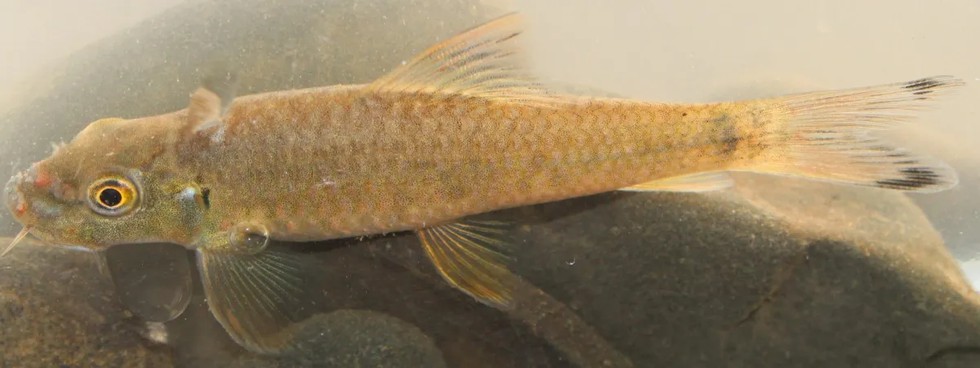In a significant breakthrough for ichthyology, researchers have discovered two new species of torrent minnows in the rivers of Nagaland. This discovery sheds light on the region’s rich aquatic biodiversity and highlights the importance of conservation efforts.
What are Torrent Minnows?
Torrent minnows are small freshwater fish that belong to the genus Psilorhynchus within the family Psilorhynchidae. These fish thrive in fast-flowing streams, particularly in rivers and mountain streams with strong currents, hence their name “torrent minnows.”
Two New Species Discovered
Researchers have recently identified two new species: Garra zubzaensis and Psilorhynchus kosygini, found in Nagaland’s rivers. These discoveries reflect the region’s unique aquatic ecosystems and their need for preservation.
Garra zubzaensis: Found in Zubza River
The first species, Garra zubzaensis, was discovered in the Zubza River, a tributary of the Brahmaputra River, located in Nagaland’s Kohima district. A research team led by Diamond Rajakumar Tenali described the species, which belongs to the Garra genus within the Cyprinidae family.
- Physical Characteristics:
- Weakly developed proboscis
- Rounded snout
- Black V-shaped band on the caudal fin
- 34 lateral-line scales
- Streamlined body adapted for swift currents
- Habitat: Found in fast-flowing streams with gravel, cobbles, and sand, the Zubza River provides an ideal environment for this species to thrive. Garra zubzaensis uses its gular discs, or sucker-like structures, to cling to rocks and forage for food.
The discovery of Garra zubzaensis adds to the growing diversity of species in the Garra genus found across the Brahmaputra basin.
Psilorhynchus kosygini: Found in Tepuiki River
The second species, Psilorhynchus kosygini, was discovered in the Tepuiki River, a tributary of the Barak River in Peren district. Described by Bungdon Shangningam, this species belongs to the Psilorhynchidae family and is particularly significant as its genus is primarily known from South and Southeast Asia.
- Physical Characteristics:
- Unique scale arrangement: 3–4 mid-ventral scales between the pelvic fins and anal opening
- 41–42 lateral-line scales
- Distinctive body shape adapted for torrent environments
- Habitat: Psilorhynchus kosygini thrives in fast-flowing, shaded waters with gravel and rocky substrates. It uses its adapted body structure to cling to surfaces and feed on small invertebrates and organic matter.
Psilorhynchus kosygini was named in honor of Dr. Kosygin Laishram, a renowned scientist for his contributions to freshwater fish research.
Importance of Conservation
The discoveries of Garra zubzaensis and Psilorhynchus kosygini underscore the critical need for conservation of Nagaland’s unique aquatic ecosystems. Protecting these fragile habitats is essential to preserve the rich biodiversity they host.
Multiple Choice Questions (MCQs):
- Which river is Garra zubzaensis found in?
- a) Brahmaputra River
- b) Tepuiki River
- c) Zubza River
- d) Barak River
Answer: c) Zubza River
- What is the main feature that distinguishes Psilorhynchus kosygini?
- a) Rounded snout
- b) Unique scale arrangement with 3–4 mid-ventral scales
- c) Black V-shaped band on the caudal fin
- d) Weakly developed proboscis
Answer: b) Unique scale arrangement with 3–4 mid-ventral scales
- Which family does Garra zubzaensis belong to?
- a) Psilorhynchidae
- b) Cyprinidae
- c) Salmonidae
- d) Cichlidae
Answer: b) Cyprinidae
- Who led the research team that discovered Garra zubzaensis?
- a) Bungdon Shangningam
- b) Dr. Kosygin Laishram
- c) Diamond Rajakumar Tenali
- d) Arun Bhai Patel
Answer: c) Diamond Rajakumar Tenali
- What habitat feature is common for both Garra zubzaensis and Psilorhynchus kosygini?
- a) Still, shallow ponds
- b) Fast-flowing, rocky streams
- c) Murky swamps
- d) Deep sea beds
Answer: b) Fast-flowing, rocky streams
